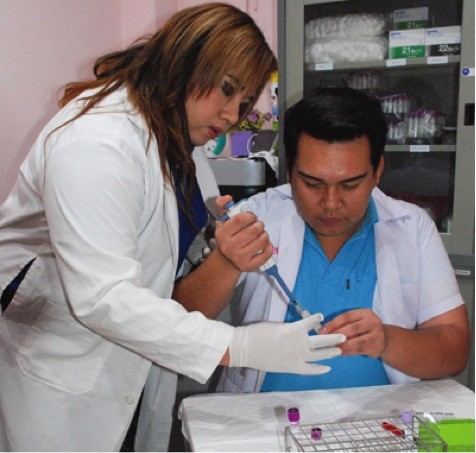Speeches Shim

Background
Advances in science have made it possible to end the AIDS epidemic by increasing access to HIV testing, HI antiretroviral medications among individuals facing the greatest risk of infection, or among those diagnosed HIV positive. The global vision to end AIDS involves diagnosing 90 percent of all infected individuals, placing 90 percent of those diagnosed on antiretroviral medications, and suppressing the HIV virus to undetectable levels among 90 percent of individuals on treatment by 2020. To achieve this vision, better approaches are needed to reach and retain in clinical services individuals with the greatest infection risks. In many countries across Asia and the Pacific, the highest proportion of new HIV infections occur among key populations including men who have sex with men (MSM) and transgender women, people who inject drugs (PWID), yet the number of people in these populations accessing HIV services remains very low.
Program Interventions
With funding from the U.S. President’s Emergency Plan for AIDS Relief (PEPFAR), USAID’s regional HIV program covers Thailand and Laos with a role to provide support to other countries in the Asia region for HIV scaling up. The Thailand program focuses on accelerating epidemic control by developing and demonstrating improved solutions to engage key populations and support their sustained access to friendly HIV testing and treatment services. In Laos, the focus has been shifted from HIV prevention and case identification to focus on maintaining people living with HIV on treatment and support for their partners in HIV diagnosis.
Through partnerships with community-based organizations and public-sector service providers, USAID/RDMA has invested resources in the development and refinement of service-delivery innovations, such as oral fluid testing, peer-driven and incentivized recruitment and targeted HIV case finding, HIV pre-exposure prophylaxis (PrEP), and differentiated models for HIV treatment, including Same-Day ART, likely to improve HIV service outcomes while reducing unit costs.
USAID supports training of local partners to develop, implement and evaluate service delivery improvements, and will invest in the generation and use of evidence to inform policy development. In addition, USAID supports advocacy and policy efforts for the accreditation and domestic funding of community-led services to ensure sustainability of effective models beyond the end of U.S. government funding in Thailand.
Results
- The USAID-supported model of community-led services has been well recognized in Thailand and internationally resulting from its significant contribution to more than 50 percent of the national HIV service uptake in Thailand. It has become a model recommended by PEPFAR for adoption in other countries in Asia.
- USAID worked with local champions, including the Thai Red Cross AIDS Research Centre to scale up PrEP in Thailand and support other countries in the region. More than 50 percent of Thai PrEP users are attributed to the USAID-supported PrEP activities, such as PrEP Express, PrEP in the City campaigns and PrEP-15 for more affordable PrEP services for key populations.
- USAID established a new partnership for sexual and reproductive health and HIV services in Bangkok with a private hospital group, Piyavate Hospital Group in Bangkok, to increase access to HIV/AIDS and transgender health services. It will support expansion of health service options for key populations and diversify domestic funding arrangements as well as promote regional approaches to support rapid scale up of HIV interventions.
- Through the PEPFAR Incentive Fund activities to assist Thailand toward becoming self-reliant in the HIV response, USAID made considerable progress in gaining increased government investments to USAID-supported community-based organizations- from $167,000 in 2016 to almost $2 million in 2019.
- In Laos, USAID supported the integration of oral-fluid HIV screening into peer-led outreach for MSM and TG, resulting in approved national guidelines for HIV self-testing.

Comment
Make a general inquiry or suggest an improvement.